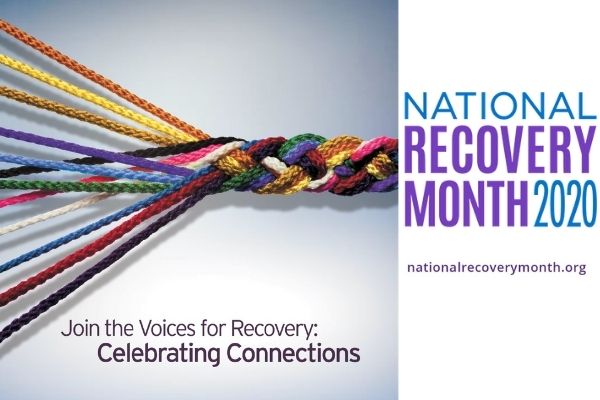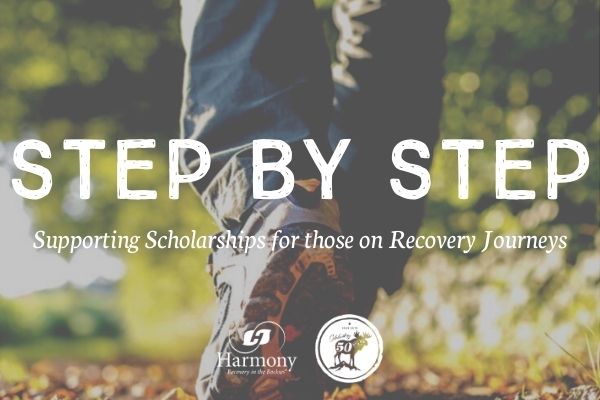The Recovery of Craig K.




2020 has been a tough year for many addiction treatment providers. The COVID-19 pandemic hit the United States in the spring and has made recovery work difficult ever since—for people with addiction and their therapists. “Getting sober during COVID-19 definitely has its challenges,” says Harmony alumna Shayla E. The Harmony Foundation had to implement a number of precautionary measures to ensure staff and client safety.
In October, Harmony suddenly faced another dangerous challenge: the East Troublesome wildfire. As with COVID, the entire Harmony community rose to the challenge.
“Before October 21, the East Troublesome fire had mostly been a nuisance,” reported The Colorado Sun, “burning through dense trees and steadily gobbling up terrain.” Then it suddenly turned into a massive firestorm and on October 22, it began to threaten the Harmony campus.
The leadership team immediately came together for an emergency meeting. “There were also other fires in the area,” remembers Harmony CEO Jim Geckler. “We had carefully monitored the Cameron Peak fire earlier that week, which was unsettling enough. Then the East Troublesome fire jumped the mountain and started to burn on our side on Thursday morning (Oct 22).”
It was time to make a decision. When fire officials issued a voluntary evacuation advisory, Harmony decided to play it safe and evacuate. After the leadership meeting made the call to leave and not wait for a mandatory evacuation order, Geckler explained the situation to the clients and let them know what to bring along.
“We had solid communication between all parties involved and because we had done a lot of preparation and training in the past, we were ready to go within 45 minutes. We packed up the medical center, had a great procedure in place for moving the belongings of clients and how to move medications safely. By 12:30 we were lined up caravan-style and ready to go.”
Everything went seamlessly because everybody communicated and everybody knew what they were supposed to do. “Strong communication between the leadership team, the staff, and the clients, as well as the ability of people to make the necessary decisions, allowed us to move forward quickly,” says Geckler.
The destination was a hotel in Greeley, Colorado. With the support of staff at the DoubleTree by Hilton Greeley at Lincoln Park, Harmony was able to successfully relocate all clients and continue to provide them with quality treatment in a safe, welcoming environment.
When Harmony’s chief marketing officer Gina de Peralta Thorne called ahead from the road, the only questions were ‘what do you need?’ and ‘when do you need it?’ “I told them we needed 28 rooms and conference space and that we were 20 minutes out,” remembers Thorne. “They were just remarkable at giving us what we needed to keep clients safe in their recovery. We even used the situation in therapy, discussing how the environment in the hotel was very different from the Harmony campus and how that worked for them.”
The medical team had to quickly build a makeshift detox facility in one of the rooms with an ironing board as a reception desk.
“We managed in an emergency setting,” says Jim Geckler. “I’m proud to say we had uninterrupted client care, every single decision throughout the evacuation was made around client care. It was inspiring to see how people rose to the occasion.”
“Our client-focused culture is collaborative. Over the past seven years or so, we worked diligently to integrate better with other care providers in Colorado,” says Geckler. “We make sure we’re there when they need us and there wasn’t a moment when we didn’t feel supported by others. I received lots of text messages inquiring whether we’re okay, some of them just saying let me know what you need—that made it manageable for us. We had deliveries every day of treats, bottled water, and games. People kept asking how can we be of assistance?”
Once in place in the hotel, the focus was on keeping clients safe. “Usually our patients are in a safe, relatively controlled environment but near the hotel, we had locations where people do drug deals and some clients told us the park was a trigger for them,” remembers Gina Thorne.
Even though the hotel was safe from the wildfire, the Harmony team now had to contend with other dangers. “There was a bar in the hotel, for example, and we had to make sure clients would not be able to order alcohol from their rooms,” explains Thorne. “But the hotel staff learned quickly to work with our unique population. There was never any negative reaction to our clients, the staff was gracious and courteous, they really bent over backward to make sure we got what we needed.”
Again, the open environment was used for therapeutic effect. “We talked about it all the time,” says Geckler. “We made the experience a celebration and congratulated clients on a regular basis. We talked with them and made sure they understood the exceptional circumstances.”
Geckler is convinced that this group of clients will have an exceptional recovery because they are connected in ways other people are not. “It was a bonding experience, and the clients have really embraced it.”
Harmony stayed in Greeley for a whole week, finally returning to Estes Park on October 29. “We now have faced two unbelievable situations this year and we never considered shutting Harmony down,” says Geckler. “Our role is to be of service to our clients who are looking for help—we couldn’t just abandon them. We were able to keep stability for our clients and we were able to celebrate their achievements under difficult circumstances. Everybody stepped up and simply asked what they can do to help. In years to come, I will look back with pride on what we accomplished during this fire emergency.”






“Drug bust nets $762,000 in meth, heroin and more near Colorado Springs,” reported The Gazette in April. Unfortunately, it was not an unusual headline for the region.
In February, KMGH in Denver reported on the indictments of 30 people, “accused of being members of a Denver-based drug trafficking group with suspected ties to a Mexican cartel. According to the report, “federal agents seized a slew of drugs in the case, including about 400 pounds of methamphetamine and 15,000 fentanyl pills—a powerful synthetic opioid—that were disguised as prescription oxycodone, according to the U.S. Attorney’s Office in Denver.”
Like several other states in the western United States, Colorado has an escalating meth problem. “The methamphetamine problem has come back with a vengeance,” Jason Dunn, Colorado’s US Attorney told Colorado Public Radio (CPR) last year. “Meth hasn’t grabbed headlines like opioids have, but it has flooded cities throughout the Southwest over the last five years. Law enforcement now says the region is in the midst of a meth crisis.”
The Bureau of Justice Assistance (BJA), a subdivision of the US Department of Justice, issued a 40-page report in December 2019 on the resurgence of methamphetamine which stated that “law enforcement and public health resources around the country, including forensic laboratories, have reported marked increases in the use, abuse, and availability of methamphetamine.” The report suggested that “the resurgence of methamphetamine may also suggest a trending away from opioid abuse.”
The resurgence of methamphetamine in recent years can indeed be seen as a consequence of the intense efforts by law enforcement and public health officials to contain the opioid epidemic, primarily by restricting access to opioid pain relievers. It is not uncommon, however, for people in active addiction deprived of access to certain substances to simply switch to a different one if the underlying reasons for the substance use disorder are not addressed in the form of comprehensive addiction treatment.
Despite the return of methamphetamine misuse, drug-overdose deaths were actually slightly down across the nation for the first time in 20 years, according to a new analysis by the Rockefeller Institute of Government. But then the COVID-19 pandemic struck and since the implementation of coronavirus-related stay-at-home orders, county health offices are reporting more overdose deaths and more calls for opioid-overdose antidotes. Stress and isolation are powerful drivers of addictive behaviors.
In Colorado, the meth resurgence has had another troubling effect. According to CPR, “Colorado law enforcement authorities shot someone, on average, once a week for the past six years,” giving Colorado the 5th highest rate for fatal law enforcement shootings in the United States. “Most of those shot were white, male, high on drugs—often methamphetamine—or alcohol and carrying a weapon.” Methamphetamine is a powerful stimulant that can make users feel invincible and paranoid at the same time—a dangerous combination.
It is misguided to think of the ongoing addiction crisis in America primarily as an “opioid” epidemic simply caused by irresponsible over-prescription of opioid pain relievers. Keeping the focus on one substance and treating it as the root of the problem is unlikely to end this crisis. The next substance is always on the horizon.
The complex disease of addiction requires comprehensive treatment and a life-changing commitment to recovery. Depriving people in active addiction of access to one addictive substance with a concerted law-enforcement effort has failed repeatedly in the past. In the case of the meth resurgence, most of the media coverage is focused on drug seizures and interdiction measures at this point. Rarely do you come across articles or blog posts that describe people addicted to methamphetamine as having an illness that deserves treatment and compassion. If we want to create effective change at both the human and community level then we must change the way we approach how we look at the disease.

A new, dangerous designer drug has reached the United States—in the middle of a deadly viral pandemic. Isotonitazene is a synthetic opioid so novel that it has not even been banned by the authorities yet.
Barry Logan is a leading authority on forensic toxicology and chief scientist at forensic firm NMS labs. He told Vice in March that his colleagues have identified isotonitazene in samples from more than 200 deceased drug users in the midwest and northeast since August last year. “Isotonitazene is the most persistent and prevalent new opioid in the US,” said Logan.
According to USA Today, isotonitazene has been detected in the blood of people who died of overdoses in Illinois and Indiana, where it was mixed with cocaine. It was also reportedly found in Canada last year.
The new drug—deemed as potent as fentanyl—comes in a white or off-white powder form or is pressed into counterfeit opioid pills. Designer drugs always tend to be one step ahead of the law and this new synthetic is no exception. It is currently not on the US Drug Enforcement Agency’s controlled substances list simply because there hasn’t been enough time to classify it.
Bryce Pardo, an associate policy researcher at the Rand Corporation, told Vice that drug laws simply cannot cope with the seemingly endless drugs being produced by underground chemists in China. “Our drug control laws are old, and the ease of chemical innovation, cheap shipping, and the ubiquity of the internet have all stretched the applicability of these laws.”
Isotonitazene seems to have arrived in the United States following an aggressive global crackdown on illicitly made fentanyl. It represents a typical pattern in the seemingly endless “War on Drugs”: When governments focus their supply interdiction efforts on one substance, the market will start delivering alternatives.
The resurgence of methamphetamine in recent years is a good example of that pattern. While opioid misuse may have peaked nationwide, people with addiction have been switching to other substances. “Nationally, since late last year, meth has turned up in more deaths than opioid painkillers like oxycodone and hydrocodone. In 14 of the 35 states that report overdose deaths to the federal government on a monthly basis, meth is also involved in more deaths than fentanyl, by far the most potent opioid,” The New York Times reported last year. “Provisional data from the CDC shows there were about 13,000 deaths involving meth nationwide in 2018, more than twice as many as in 2015.” Now, we’re witnessing the emergence of a new synthetic opioid as well.
A focus on disrupting the supply of addictive drugs has never worked because it doesn’t address the reason for the demand. The actual misuse of drugs and alcohol is only one aspect of a substance use disorder and not necessarily the most important one. That is why Prohibition, the “War on Drugs,” and the “Just Say No” campaign all failed to achieve their objective.
Addictions are frequently driven by underlying mental health issues such as anxiety, depression, and trauma. If these issues are not addressed within a comprehensive treatment approach, sustained recovery is unlikely to happen.
Addiction cannot be reduced to substance use, it is not simply chemically caused by the presence of drugs and alcohol in the human body. Addiction is a complex biopsychosocial and spiritual disorder with many interlocking conditions and mechanisms. “By itself, nothing is addictive,” wrote Maia Szalavitz provocatively in her influential 2016 book Unbroken Brain. “Drugs can only be addictive in the context of set, setting, dose, dosing pattern, and numerous other personal, biological, and cultural variables. Addiction isn’t just taking drugs. It is a pattern of learned behavior.”
Addiction affects the body, mind, and spirit. It is a disease requiring comprehensive treatment in an integrated care environment. Recovery from addiction is also a personal quest for meaning and connection with other people, our human nature, and the entire universe.

By Michael Rass
Addiction cannot simply be reduced to substance use, chemically caused by drugs and alcohol in the human body. Addiction is a complex biopsychosocial and spiritual disorder with many interlocking conditions and mechanisms. Many addiction professionals view it as a disease of the mind, body, and spirit.
A Disease of the Body:
Most psychoactive substances are regarded as toxins by the human body and its defense system. A healthy liver will try to purge any amount of alcohol as soon as possible, for example. Different substances have different effects on the body. Alcohol destroys brain cells and depresses the central nervous system, while cocaine is a stimulant, raising blood pressure and heart rate. Both substances, like others, trigger the release of certain chemical messengers in the brain, known as neurotransmitters. The main ones are dopamine, which elicits pleasure, norepinephrine causing arousal and focus, and serotonin, which causes feelings of happiness, counteracting negative emotions.
The repeated, artificially elevated release of these neurotransmitters will eventually cause changes in the brain of the addicted individual, providing the increasingly rigid neurological structure for the psychological aspects of addiction. In addition to slowly changing the mind of the addicted person, substances like alcohol, crystal meth, cocaine, and others will have a pathological impact on the physical body, damaging major organs, the cardiovascular system, the skin, and teeth as well as causing dangerous infections, malnutrition, and chronic pain conditions. Most people suffering from a severe substance use disorder (SUD) have been neglecting their physical fitness for a long time, having completely given up on anything resembling a healthy lifestyle.
A Disease of the Mind:
For psychiatrists, addiction is primarily a disease of the mind. The current edition of the Diagnostic and Statistical Manual of Mental Disorders (DSM-5)—the diagnostic manual widely used by psychiatrists in the United States—states that “all drugs that are taken in excess have in common direct activation of the brain reward system, which is involved in the reinforcement of behaviors and the production of memories.” These psychoactive substances “produce such an intense activation of the reward system that normal activities may be neglected.”
Eventually, this “intense activation” may trap the user in an addiction cycle of craving, using, and withdrawal, leading to renewed craving. In the psychiatric jargon of the DSM-5, “the essential feature of a substance use disorder is a cluster of cognitive, behavioral, and physiological symptoms indicating that the individual continues using the substance despite significant substance-related problems.” In other words, compulsive substance use, despite negative consequences. The user is now caught in a cycle of drug or alcohol use that requires ever-increasing amounts of the substance just to feel “normal.”
The question is, how did the addicted person get there? Why the “intense activation” in the first place? And then again and again? This is where other mental health issues typically play a crucial role. Most addiction professionals now believe that substance abuse is not simply caused by irresponsible pleasure-seeking but should, in most cases, been seen as an attempt to self-medicate serious mental health conditions like posttraumatic stress disorder, major depression, or anxiety. And those are often connected to highly traumatic life events the individual is unable to handle in a healthy way. The “intense activation” is supposed to numb intense emotional pain.
Due to the phenomenon of tolerance this numbing can only be maintained with ever-higher doses of drugs and alcohol while the brain tries to counteract the unnatural surges of neurotransmitters in an effort to rebalance its hormonal setting. At the same time, more and more toxins will do more and more damage to the well-being of the user. Meanwhile, the continual degradation of the physical body causes more stress and emotional pain, providing further motivation to continue with substance misuse. Body and mind are caught in a deadly down spiral: the addicted mind will make the body sicker, and the degraded body will exacerbate the cravings driving the addiction.
A Disease of the Spirit:
For many addiction professionals, addiction goes beyond this body-mind interaction, though. They also view it as a disease of the spirit. In his influential study, Canadian physician Gabor Maté compared addiction to the “realm of hungry ghosts,” one of six types of rebirth in Asian mythology. It is said to be the abode of restless spirits suffering from insatiable cravings and unhealthy attachments, condemned to inhabit dismal places.
At the heart of the addiction problem is a deeper malaise: the disconnection from the Higher Power—whatever that might be, a missing sense of purpose, a failure at authentic self-actualization, the highest level in Maslow’s pyramid of human needs.
This ethereal aspect of the disease is often a hard sell in an increasingly agnostic society. It doesn’t easily correspond to medical and scientific concepts and spirituality can mean very different things to different people. Whatever it is, Americans are increasingly identifying with it. “About a quarter of US adults (27 percent) now say they think of themselves as spiritual but not religious, up 8 percentage points in five years,” according to a Pew Research Center survey conducted in 2017.
Many of them see spirituality as a personal search for the meaning of life, for connection with the entire universe—with a Power greater than ourselves. They do not necessarily seek a religious practice defined by mandatory observances, rules, and prohibitions. Instead, they want to connect with a Higher Power rooted in love and compassion—a Power that gives human beings perspective, meaning, and a life of purpose.
It is a perspective of the utmost importance to people in recovery. Many succumbed to a life of despair because they lacked a spiritual outlook. Sadly, our current culture seems to promote mostly vanity, instant gratification, zoning-out, and craving for material distractions, all things that are dangerous for a person in recovery. Addiction is a demon trying to disconnect us from our spirituality, the Higher Power, and our fellow human beings. To recover fully from addiction we must strengthen the body, heal the mind, and reconnect to our spirituality. This takes time and effort. A lot of time and effort. That is why recovery is a life-long pursuit.